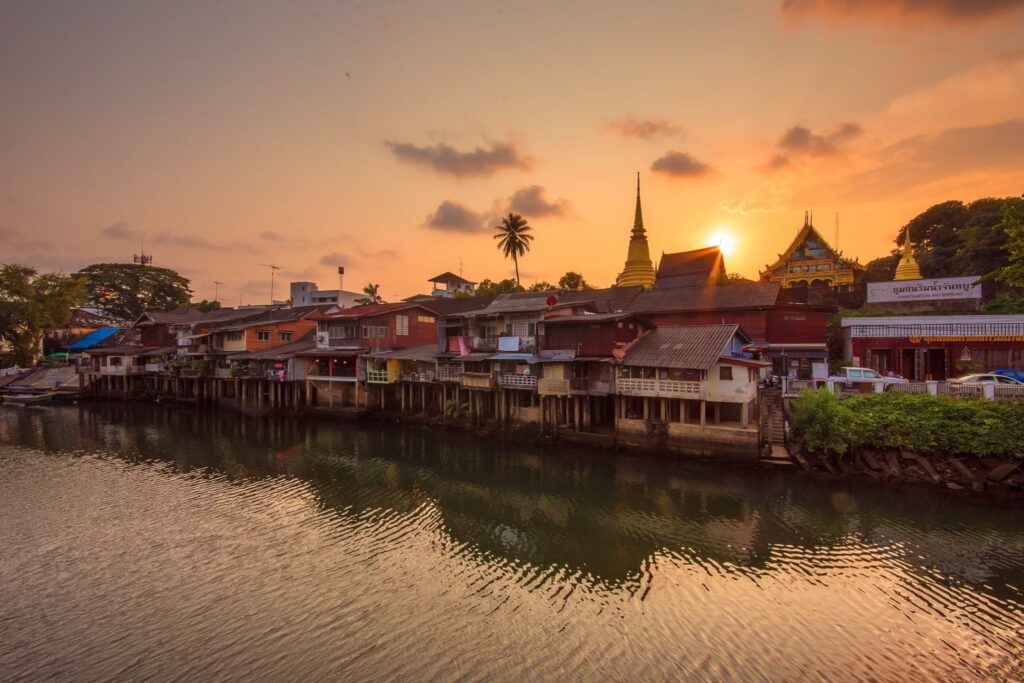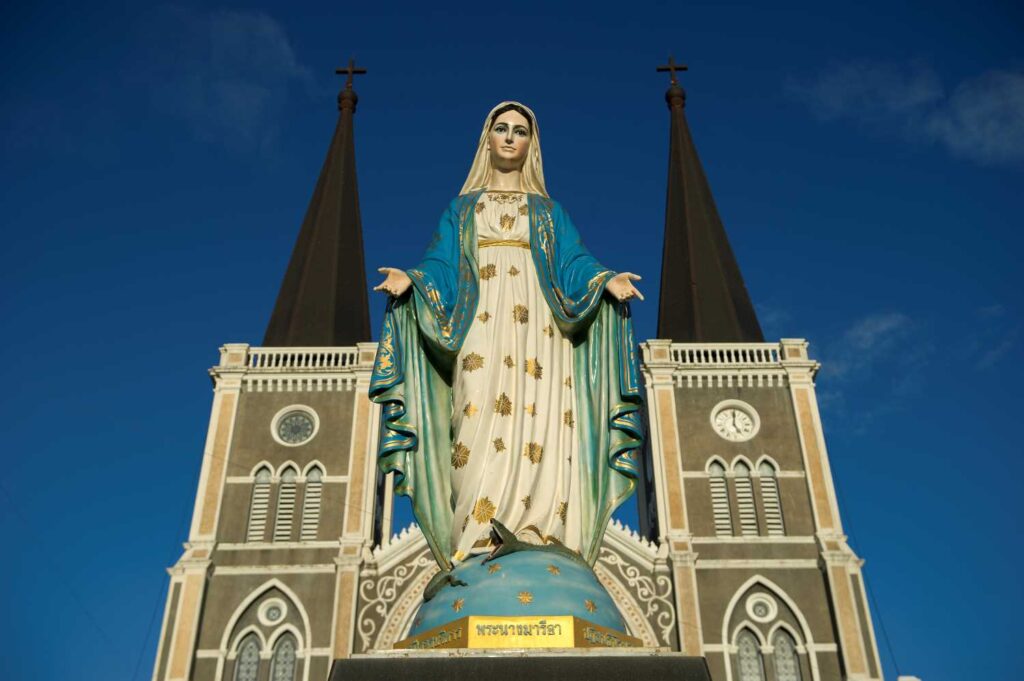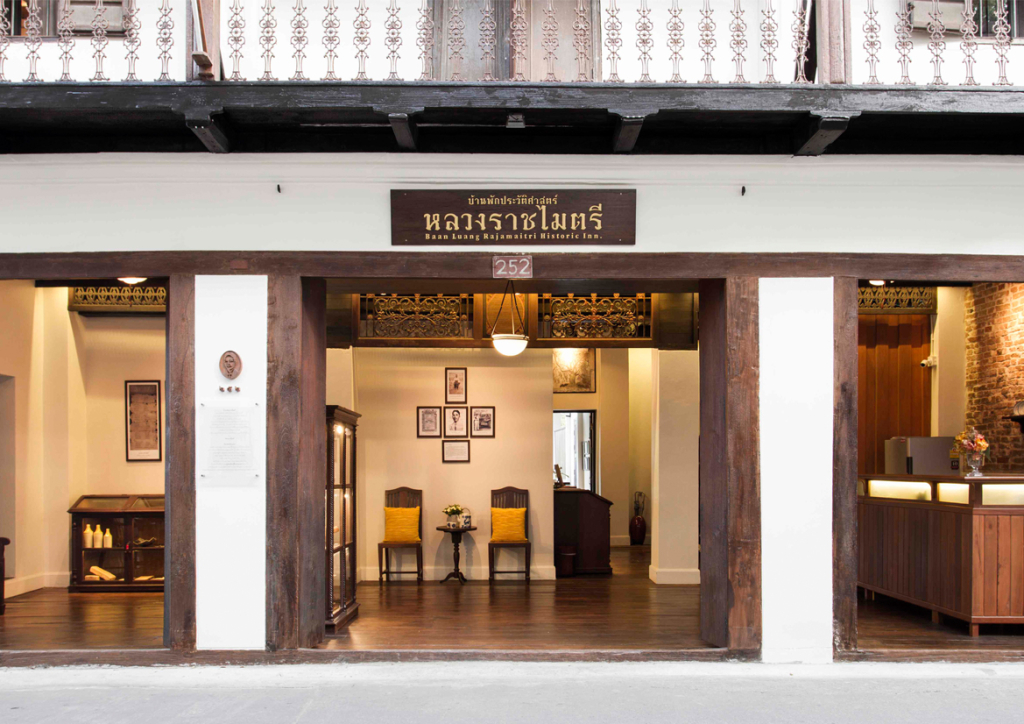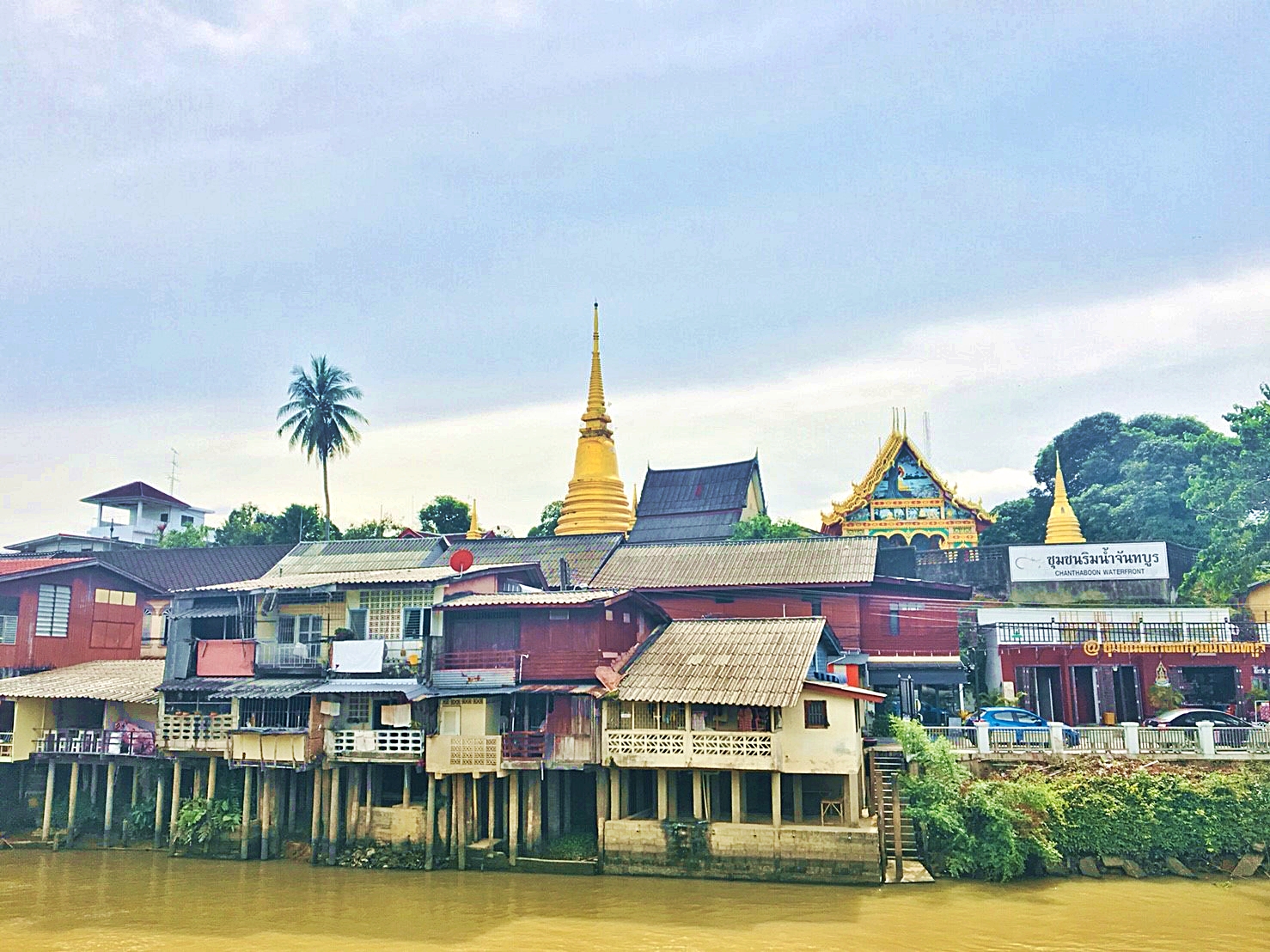If you were to type “Chanthaburi” into Google’s search bar, the first image that pops up is likely to be a picturesque scene of a historical community, complete with charming houses, greenery, and temples mirrored on the water’s surface. On days when the weather is good, the sunlight does its job perfectly. This captivating image is reminiscent of a living painting that is more than 300 years old.
Discover the vibrant Chanthaburi Riverside Community

The Chanthaburi Riverside Community offers a rich history spanning over 300 years. Thanks to its convenient location and simple navigation, this place has become a melting pot of diverse cultures, with Thais, Chinese, and Vietnamese making it their home. The result is a vibrant mix of people from different races and religions.
About a century ago, this community was an important hub for trade and transportation. Here is the location of the province’s first road, ‘Thanon Liap Natee’ (now Sukhaphiban Road). Stretching approximately one kilometer, it is divided into three sections: ‘Yan Tha Luang’, housing government offices and a transportation hub; ‘Talad Klang’, a trade center with several ports for transportation; and ‘Talad Lang’, a center for handicraft production, including mat weaving, lapidary, blacksmithing, and general trading, including savory food and local desserts. The commercial neighborhood near the riverfront saw its function dwindle over time as land transportation improved and commercial areas expanded along roads.
The Chanthaburi Riverside neighborhood has successfully maintained its historical and cultural splendor. It is reflected in the stunning architecture of residences, shrines, temples, and Christian churches that blend Thai, Chinese, and Western influences.
Aside from the stunning architecture, the Chanthaburi riverbank radiates the charm of the community’s simple and peaceful way of life. Since 2009, the community has worked together to establish a community development strategy that prioritizes historical value and a way of life. It has promoted and developed the Chanthaburi Riverfront as a sustainable cultural tourism destination. The historical architecture on both sides of the road is still intact, with shops selling local products and souvenirs and a variety of restaurants serving delicious savory and sweet dishes, all blending seamlessly with the traditional atmosphere.
Did you know?
The name “Chanthaburi” is connected to the geographical features and native plants of the area. This area is known for its abundance of sandalwood trees, a fragrant wood commonly used in auspicious ceremonies. It is believed that the Sanskrit word “Pura,” which means “city,” is the source of the term “Buri.” Thus, “Chanthaburi” can be seen as a city abundant in sandalwood trees or a city known for its aromatic wood.
5 things not to miss when visiting Chanthaburi’s Riverside Community
Visit one of Thailand’s most stunning Christian cathedrals, the Cathedral of the Immaculate Conception

The Cathedral of the Immaculate Conception, also known as the Chanthaburi Catholic Church, was founded in 1711 on the right bank of the Chanthaburi River by around 130 Vietnamese Catholics who sought refuge in Chanthaburi to escape persecution for their faith in Vietnam. Later, in 1903, a new church (the fifth one) was constructed by a French priest to serve the increasing number of Christians in the area. The spires atop the two bell towers are the showpiece of this church’s Gothic architectural design. Inside, stained glass windows depict saints, and there is a figure of the Virgin Mary adorned with over 200,000 jewels, another well-known Chanthaburi product. This is regarded as the oldest and most magnificent church in the eastern region.
Opening Hours: 9:00 a.m. to 3:00 p.m. Monday through Friday, 9:00 a.m. to 5:00 p.m. Saturday, and 12:00 p.m. to 5:00 p.m. on Sunday.
Please make arrangements for group visits ahead of time. Tel. 0 3931 1578
More information: www.facebook.com/ChanthaburiCathedral
Dive into the Chanthaburi Riverside Community’s past and present
The Chanthaburi Riverside Community Learning Center was founded in 2010 by passionate locals dedicated to preserving the architectural heritage of the community. The center is located in House Number 69, a charming wooden house that has stood for over 100 years. Step inside and lose yourself in a photo exhibition. Discover the rich history of the Chanthaburi Riverside Community through a collection of old photos, showcasing the way of life since the reign of King Rama V and the French occupation of Chanthaburi. Furthermore, students’ architectural line drawings of houses are worth admiring. Take a stroll and observe the vibrant riverside community, where you will find a variety of houses classified into three groups based on their construction: wooden buildings, concrete buildings, and half-concrete, half-timbered buildings.
Opening Hours: Saturday and Sunday from 8:00 a.m. to 5:00 p.m.
Travel Tip: Buildings to explore include Baan Luang Rajamaitri, the Old Drug Store, Yindee Aporn Coffee Shop, Rocket Ice Cream Shop, Baan Mor Chan, Tiang Seng Tung Shrine, Baan Luang Prakob Nitisarn, Baan Phokaban, Chanthaburi Bakery, and Baan Khun Burapha Phiphon.
Don’t miss out on Jay Eed’s seafood noodles; they’re a must-try!
Jay Eed’s Seafood Noodles was one of the first seafood noodle shops in Chanthaburi Province. The highlight of this modest noodle store, which is constantly crowded, is the daily fresh seafood selection, which includes crab, Mantis shrimp, squid, and shrimp from local fishermen. “Tom Yum Jao Samut”—seafood noodles, seafood rice, crab rice, and a spicy chili salt sauce—are the most popular dishes on the menu. A refreshing and iconic drink, “Calamansi juice” is the perfect complement to the zesty seafood noodles. It is made with freshly squeezed citrus juice, sugar, and a pinch of salt, creating a refreshing flavor. This tempting blend of flavors is guaranteed to satisfy even the pickiest palate.
Price range: 50-200 baht per plate
Opening hours: Open daily from 09:00 to 16:00
Experience the delightful aroma of the egg cakes at Pa Tai’s shop, a tradition spanning over 70 years
As you stroll by and catch a whiff of freshly baked treats, you will know you have come to the right place! In addition to the assortment of sweets for sale outside, the two-story wooden shophouse by the roadside is home to the egg cake oven, where the family’s secret recipe for egg cake was passed down from the French priest who immigrated with the Catholic Vietnamese during the pioneering era of Chanthaburi. Although the ingredients are simple—only eggs, wheat flour, and sugar—the secret to baking the egg cake to be sweet and fragrant, crispy on the outside, and soft on the inside is an art that has been passed down from generation to generation. Today, Aunt Tai’s second-generation heir remains committed to maintaining this mouth-watering heritage, determined to pass on the original savor to the next generation. The pleasant flavor of freshly cooked egg cakes serves as a bridge between the past and the present.
Price: 25 baht per bag (10 pieces)
Opening hours: Open daily from 09:00 to 17:00
Did you know?
The original recipe for Thai egg cake is thought to have originated in France’s Madeleine, a buttery delicacy with lemon and orange peel in the shape of a shell. It was converted from a Western-style shell to a distinctive Thai-style starfruit.
Spend a relaxing night at the elegant Baan Luang Rajamaitri: The Residences of Prominent Figures in Chanthaburi

This historic home, with a rich 150-year-old legacy, was once the residence of Luang Rajamaitri, a true pioneer who introduced rubber farming to Chanthaburi from Malaya. It eventually became a significant cash crop for the province, providing a steady source of income for farmers in the eastern region. This earned him the nickname ‘Father of Eastern Rubber’. His residence is crafted from golden teak wood. It has now been renovated in a contemporary style into a boutique hotel under the name “Baan Luang Rajamaitri Historic Inn.” Those who choose to stay here are becoming a part of a larger movement to protect the community’s traditional ways of life from the ravages of modernization, to keep the locals’ endearing hospitality intact, and to serve as a model for other historical Thai communities.
Room Info: 10 rooms range in size from 15 to 32 square meters and cost between 1,690-3,490 baht per night.
More information: www.baanluangrajamaitri.com.
How to get there
By Bus: Buses and air-conditioned buses for Bangkok-Chanthaburi depart from the Eastern Bus Terminal (Ekamai) and the Northern and Northeastern Bus Terminals (Mochit 2) several times a day. The travel time is approximately 3.5 hours.
By van: The public van for Bangkok-Chanthaburi, boarding at the front of Century Mall (BTS Victory Monument), operates daily from 06:00 to 19:00 hrs. The final stop is Robinson Chanthaburi.
More info: www.facebook.com/chanthaboonwaterfront
Share




